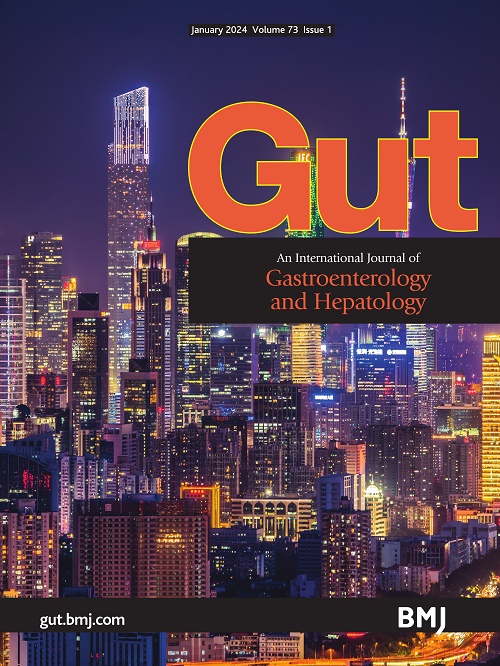24-Nor-ursodeoxycholic acid: a novel treatment targeting T-cell-mediated immune dysregulation in primary sclerosing cholangitis and beyond
IF 23
1区 医学
Q1 GASTROENTEROLOGY & HEPATOLOGY
引用次数: 0
Abstract
Primary sclerosing cholangitis (PSC) is a chronic cholestatic liver disease characterised by progressive inflammation and fibrosis of the bile ducts, leading to biliary cirrhosis and an increased risk of cholangiocarcinoma. PSC is commonly associated with inflammatory bowel disease (IBD). The pathogenesis of PSC is complex and not fully understood, but immune-mediated mechanisms, particularly T cell involvement, are believed to play a central role. Genetic studies have identified associations between PSC susceptibility and specific human leucocyte antigen (HLA) haplotypes, suggesting a role for T cell-mediated autoimmunity.1 Gut and liver resident T cells from PSC patients with concurrent IBD exhibit heightened responses to shared antigens, indicating a related pathogenesis between PSC and IBD.2 Peripheral blood mononuclear cells from PSC patients show increased frequencies of T helper 17 (Th17) and Th1/Th17 cells on pathogen stimulation.3 Within the liver, there is an accumulation of tissue-resident naïve-like CD4+ T cells predisposed to differentiate into Th17 cells. These tissue-resident T cells produce interleukin (IL)−17 and IL-22, contributing to local inflammation by recruiting neutrophils via CXCL8.4 Therefore, restoring immune balance in PSC represents a promising therapeutic approach. However, while existing immune-modulating therapies showed some improvement in cholestasis markers, particularly in PSC patients with worse liver function, the overall clinical benefits were limited. 24-Nor-ursodeoxycholic acid (NorUDCA) is …求助全文
约1分钟内获得全文
求助全文
来源期刊

Gut
医学-胃肠肝病学
CiteScore
45.70
自引率
2.40%
发文量
284
审稿时长
1.5 months
期刊介绍:
Gut is a renowned international journal specializing in gastroenterology and hepatology, known for its high-quality clinical research covering the alimentary tract, liver, biliary tree, and pancreas. It offers authoritative and current coverage across all aspects of gastroenterology and hepatology, featuring articles on emerging disease mechanisms and innovative diagnostic and therapeutic approaches authored by leading experts.
As the flagship journal of BMJ's gastroenterology portfolio, Gut is accompanied by two companion journals: Frontline Gastroenterology, focusing on education and practice-oriented papers, and BMJ Open Gastroenterology for open access original research.
 求助内容:
求助内容: 应助结果提醒方式:
应助结果提醒方式:


